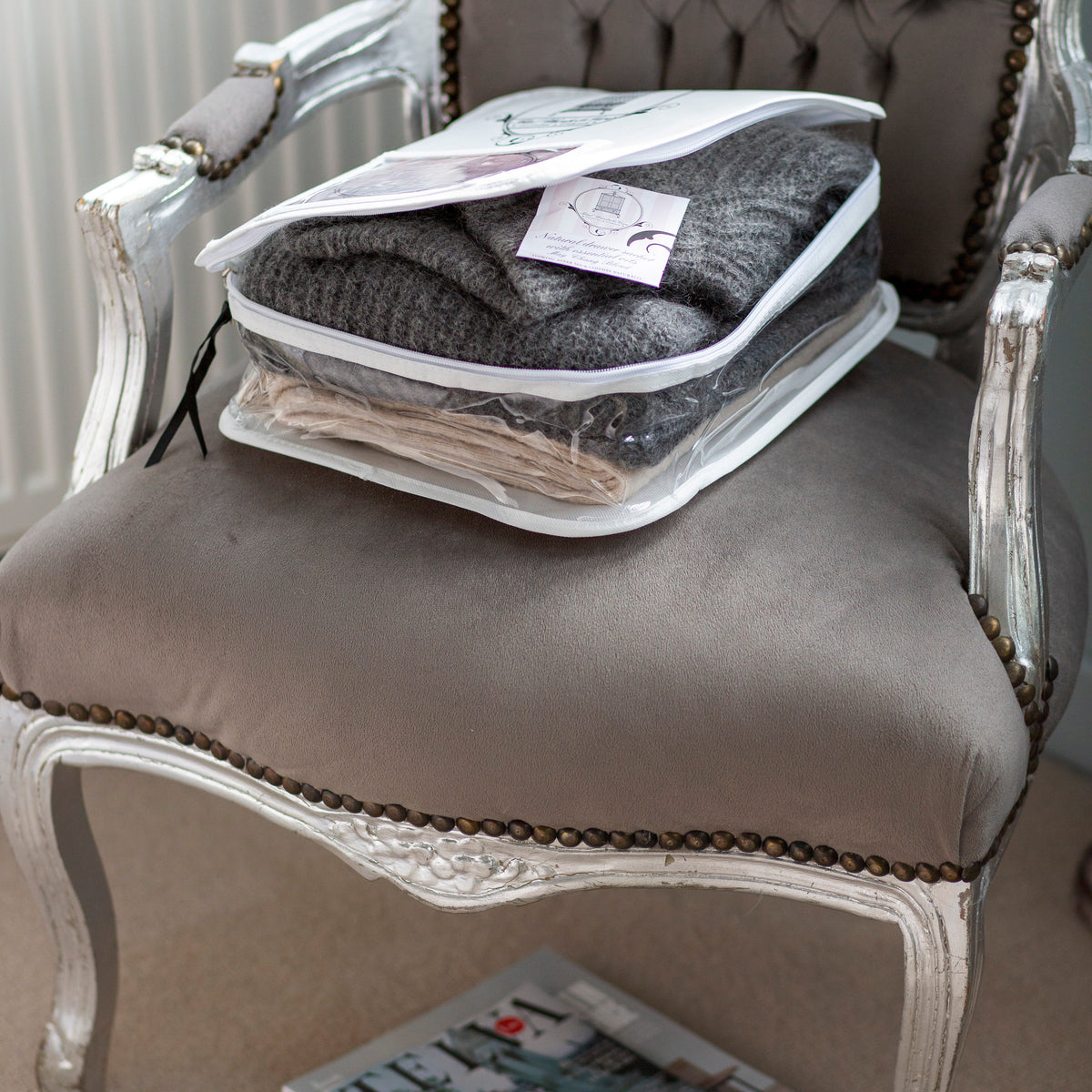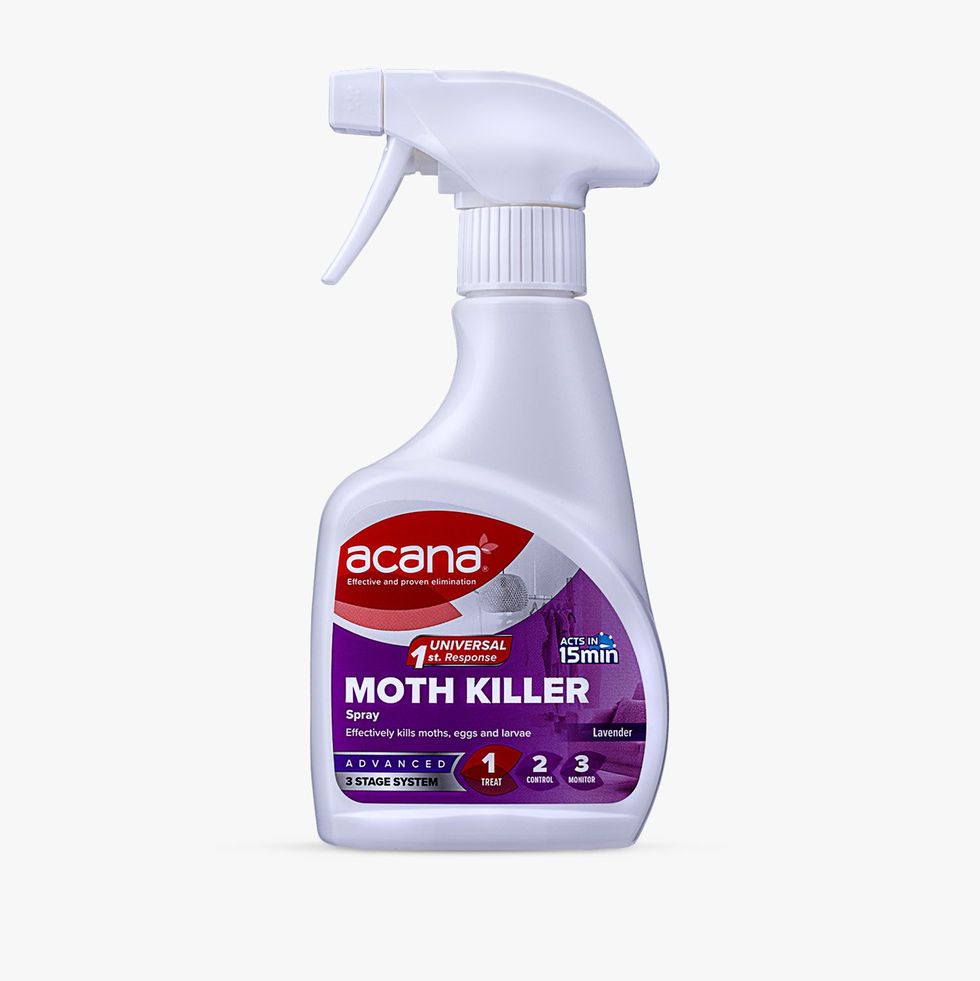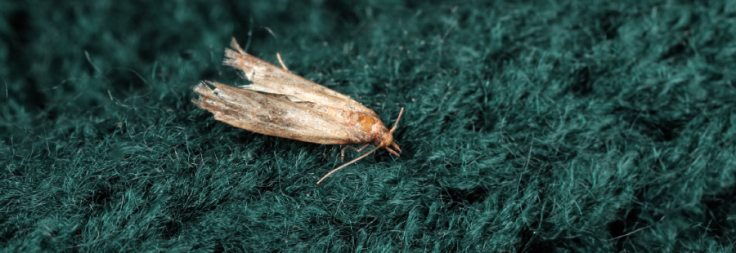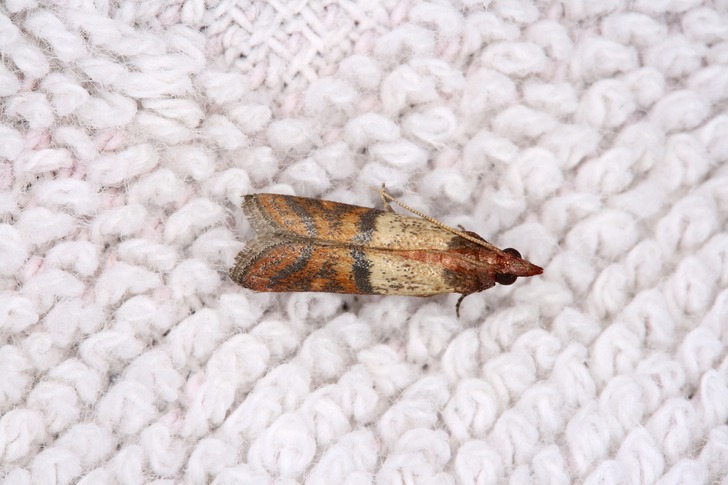Natural Moth Repellents: How to Get Rid of Moths - FelinFach

Natural Moth Repellents: How to Get Rid of Moths - FelinFach
Protecting your wool blankets and wool products against the Common Moth with natural repellents - a handful of dried herbs known to repel moths.
FelinFach Natural Textiles. Beautiful, iconic hand-woven Welsh blankets, throws, and tapestry blankets. Candles, hand dyed yarn, natural dye craft courses. .
How to get rid of Moths Naturally
It is possible to use natural deterrents to get rid of moths, avoiding the use of harsh chemicals. The main natural moth repellents are cedar wood blocks or pellets and Lavender sachets. Other herbs, such as Rosemary, Mint and Thyme are also natural repellents.
Nobody loves natural fibres more than we do. Cotton, silk, cashmere, mohair and of course wool, we work with them all! We love them because they are less damaging to the environment, they are natural sustainable products, their breathable qualities make them soft and airy against the skin, and their distinctive textures are great for fashions and home décor.
It is therefore unfortunate that these clothing moths also like natural fibres and we need to find ways to get rid of moths with natural moth repellents!!!
Natural fibres such as sheep’s wool, silk, and cashmere and others are rich in keratin – a key structural protein found in our hair and nails, as well as wool, fur, horns, and so on. And unfortunately, whilst natural fibres are very protecting and resilient materials, clothing moth larvae (Tineola Bisselliella) absolutely love it. In nature moths are one of the few ways that wool is broken down – in modern housing, these clothes moths will attack clothes, carpets, furs, blankets, upholstery, piano felts, brush bristles and also of course, our lovely wool blankets and throws. Clearly, it is an unwelcome presence in the fibre enthusiast’s home.
What we know about Clothing Moths
Clothing moths are different to other moths in many ways. For example, they are not attracted to light, but prefer to burrow away to cracks in the floors, or in furniture, where they will be undisturbed. The odours from dirty clothes and the keratin oils in natural fibres attract them and, once finding an undisturbed location, they lay their sand-like eggs. Adult moths are not directly harmful to natural fibres; it is the moth larvae that live on the wool and other fibres. After hatching, the larvae consume the wool around them, leaving the characteristic small holes that you find in affected clothing. Larvae develop relatively slowly. Depending on the nature of the location and the conditions, it could be many months for newly hatched larva to mature into adult moths. This is fortunate as if you monitor your natural fibre products regularly (clothing moths consume silk and fur as well), you can eliminate clothing moths before they can reproduce or cause damage.
The Life Cycle of Common Moths
The lifespan of adult moths is short, between ten and twenty-eight days. The female moths usually lay between forty and one hundred eggs, which generally hatch between three and twenty-one days. Clothing moths larvae live for approx. thirty-five days or more and will wander some distance away from their food source to pupate in crevices. Taken as a whole, the life cycle is between sixty-five and ninety days at ordinary household temperatures and there are usually two generations of moths per year.
How to keep them away
Keep all-natural fibres as a clean as possible – washing or soaking in hot water (above 50 degrees Celsius) destroys any eggs or larvae and adult moths are less attracted to clean wool. Spin dry using the spin cycle of your washing machine or blot water out with a towel, then hang or lay flat to dry. If your item is not one that can handle this hot temperatures or water, alternatively, you can freeze them to kill the larvae (place your items in the deep freeze for at least 14 days).
If these options are not possible, vacuum all around the infested area very carefully and in each crack and corner of the furniture concerned. You should ensure that you dispose of your vacuum waste outside, monitor the area closely and repeat vacuuming until the problem is solved.
Do not store natural fibre items in one place for a long time – either wear them, rustle through them, or inspect them regularly. Clothing moths prefer to be undisturbed. If you store your natural fibres for a year in, for example a drawer, you have just created its ideal living environment; dark, undisturbed, surrounded by wool. By regularly going through your natural fibres you can create a less hospitable living environment and, if you happen to have acquired clothing moths, you can catch the problem early and take steps to deal with it.
Store your natural fibres with a cloth sachet containing dried plants for moth prevention. These tend to be plants with strong smells and whilst wit is not known exactly why this works, generations of people have been using plants for natural moth prevention. Rosemary, thyme, mint, lavender, cloves, tansy, pennyroyal, and artemisia are just a few of the plants commonly used and they can be grown easily in most gardens.
Natural Moth Repellents - Make your Own
Making a natural moth repellent sachet is easier than you think. All you need is a handkerchief, (or any other square of cloth) for each sachet, some ribbon, and a handful of dried herbs known to repel moths.
These herbs include:
Lavender
Cedar
Rosemary
Mint (also good for keeping mice out of the house)
Thyme
Cinnamon
Southernwood
Cloves
We do all love our natural fibres, be they wool, cotton, silk, and many others, and not forgetting our Welsh blankets and Tapestry blankets. Let's not let the common clothing moth destroy them by using natural moth repellents!!!
About FelinFach
Located in Pembrokeshire Wales, our ethos is defined in the three wordsNATURAL TRADITIONAL HANDMADE.
Hand woven iconic Welsh blankets and Welsh tapestry blankets.
Hand dyed yarn, dyed with natural dyes only - no exceptions!
Handmade candles, candle accessories, Candle Making Workshops and soapery.
Natural Dyeing Craft courses.
Yarn shop, yarn bowls, project bags, tools and accessories for knitters and crafters.
Welsh Gifts, souvenirs, made in Wales, handmade in Wales.
We are a proud supporter of Americymru, the Campaign for Wool, Global Welsh and Red Dragon America.
Last updated 1st January 2024

How to Get Rid of Moths Naturally

Natural Moth Repellent, Robert Mahar

How To Get Rid Of Moths At Home – 16 Repel & Prevent Tips

How to Get Rid of Moths: 8 Ways, Plus Prevention Tips

How to Get Rid of Moths Naturally - Hello Natural Living

Homemade moth repellent – get rid of moths, naturally

You Can Totally Rely on These 5 Natural Moth Repellent Recipes - Home Quicks
:max_bytes(150000):strip_icc()/get-rid-of-moths-1388158-07-523c9b897b294e9dac995ffebca3ef85.jpg)
How to Get Rid of Closet Moths Naturally

What Is The Best Natural Moth Repellent?

Natural Moth Repellents: How to Get Rid of Moths - FelinFach

How To Get Rid Of Moths At Home – 16 Repel & Prevent Tips

How to Make Natural Moth & Silverfish Repellant

Natural Moth Repellent, Robert Mahar

:max_bytes(150000):strip_icc()/2SP4157574-8-Moth-Protection_HeroSquare-ae1d9cc1968b4bee8595bdd8904c660b.jpg)
